Do you want to master the art of liquidity by learning about the ICT internal and external range liquidity? In this blog post, we will delve deeply into these concepts, guiding you from the basics to advanced strategies through real market examples. Understanding these liquidity concepts can significantly improve your trading success, especially if you’re working with a regulated forex broker or trading independently.
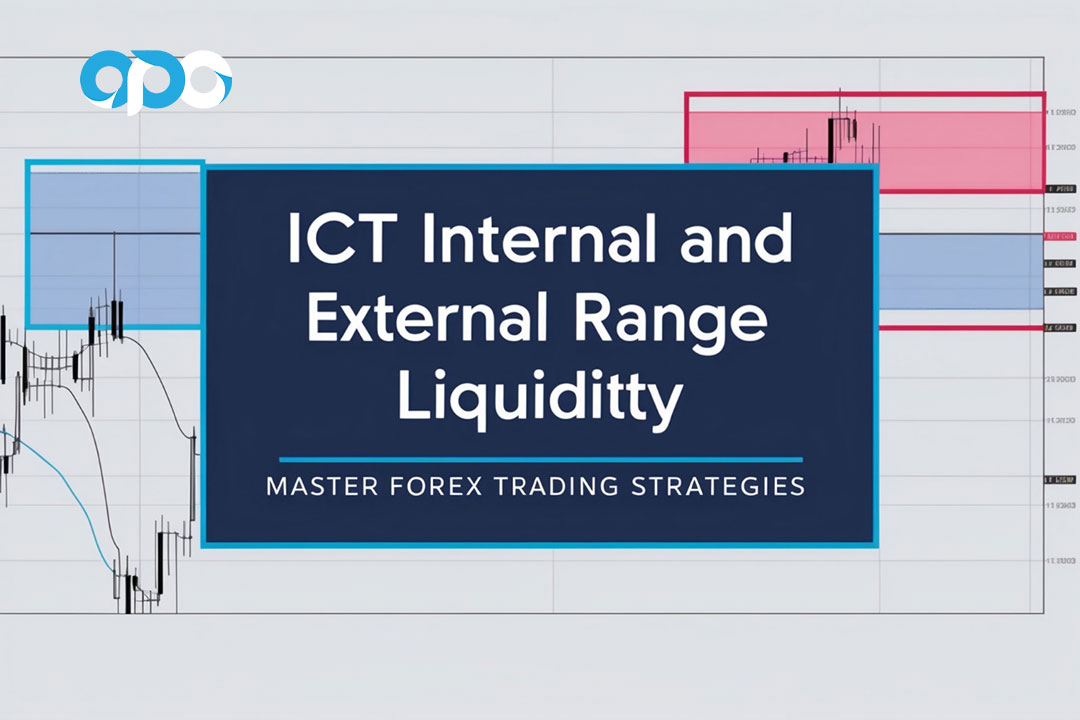
Before diving into the specifics of ICT internal and external range liquidity, we’ll start with some foundational concepts that will make the advanced material easier to grasp.
ICT internal and external range liquidity are essential components in the forex market, influencing how and why prices move. Mastering these concepts enables traders to anticipate market movements, identify potential trade opportunities, and optimize their trading strategies. By understanding and applying ICT liquidity principles, you can gain a competitive edge in the forex market, whether you trade with a regulated forex broker or independently.
What You Will Learn:
- The Fundamentals of Price Movements: Why and how prices move in the forex market.
- ICT Dealing Range: Understanding the basic structure of an ICT dealing range.
- Deep Dive into ICT Internal and External Range Liquidity: Definitions, examples, and strategies.
- Daily Bias Identification: Using ICT liquidity concepts to determine daily market bias.
This guide is designed to enhance your trading skills, from understanding why prices move to applying advanced liquidity concepts in your trading strategy.
Why Does Price Move?
Have you ever wondered why prices move in the forex market? The movement of prices is primarily driven by two factors:
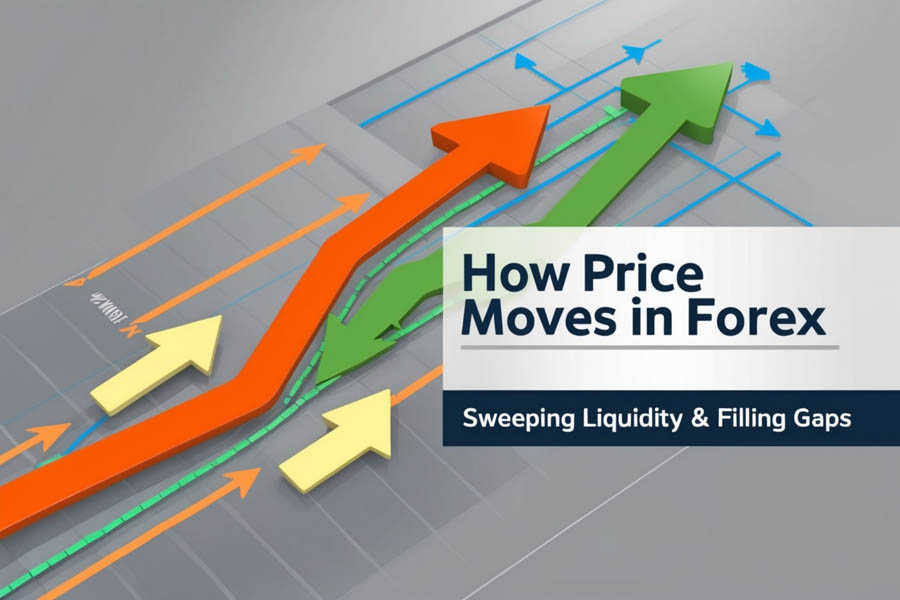
- To Sweep Liquidity: The market often moves to capture the liquidity positioned around significant price levels, such as old highs and lows.
- To Balance the Fair Value Gap: Price moves to fill gaps created when there is an imbalance in the market, often referred to as the Fair Value Gap (FVG).
What Is an ICT Dealing Range?
An ICT dealing range is the area between an established Swing High and Swing Low, where both have taken the liquidity of a previous high or low. This range forms the foundation for understanding internal and external range liquidity.
Understanding the ICT dealing range is crucial as it helps traders identify the key areas where price is likely to react, thus providing better entry and exit points for trades.
ICT Internal and External Range Liquidity: A Deep Dive
What Is ICT Internal Range Liquidity?
First, let’s clarify what is meant by the “internal range.” The internal range refers to anything within the boundaries of an ICT dealing range. However, when we talk about ICT internal range liquidity, we specifically refer to the liquidity present in the Fair Value Gap (FVG) within this range.
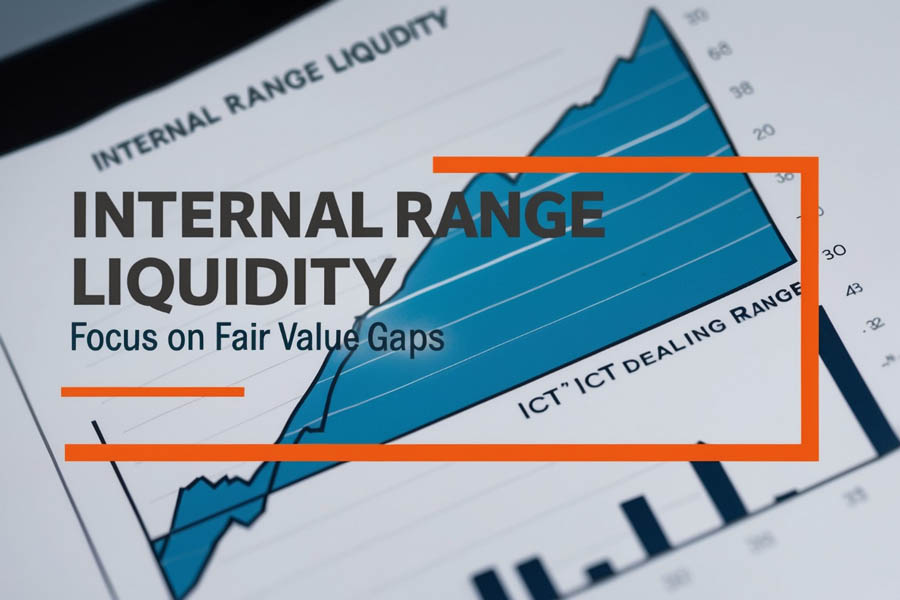
But why is only the Fair Value Gap considered as internal range liquidity and not the highs, lows, or order blocks?
The Fair Value Gap (FVG) is defined as the gap left between the high of the first candle and the low of the third candle in a three-candle formation where the price does not overlap. This gap is considered a key liquidity area because it represents an imbalance that the market will typically move to fill. When the price moves to balance the Fair Value Gap, it sweeps the liquidity in the lower timeframe, making the Fair Value Gap a critical component of ICT internal range liquidity.
Key Characteristics of ICT Internal Range Liquidity:
- Occurs Within the ICT Dealing Range: Positioned between the Swing High and Swing Low.
- Fair Value Gap Focus: The primary internal range liquidity is found in the Fair Value Gap.
- Market Imbalance: The FVG represents an area of imbalance that the market seeks to correct.
- Lower Timeframe Liquidity Sweep: As the price moves to balance the FVG, it typically sweeps liquidity in the lower timeframe.
What Is ICT External Range Liquidity?
To understand external range liquidity, we first need to define the external range. The external range encompasses the highs and lows of an ICT dealing range. The high of this range is referred to as “buy-side liquidity,” under the assumption that buy stops are resting above this level. Conversely, the low of the range is known as “sell-side liquidity,” where sell stops are presumed to be positioned.
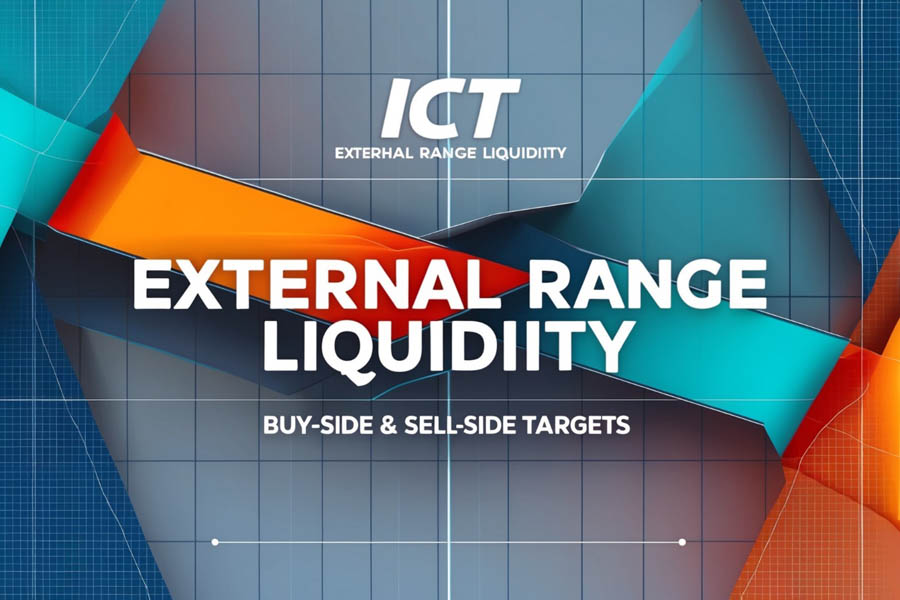
Price tends to move from external to internal liquidity and then back from internal to external liquidity, a cycle that continues as the market seeks to balance out liquidity imbalances.
Key Characteristics of ICT External Range Liquidity:
- Defined by Extremes: Found at the extremes of the ICT dealing range, at the Swing High and Swing Low.
- Buy-Side and Sell-Side Liquidity: The high represents buy-side liquidity, while the low represents sell-side liquidity.
- Market Target: The market often moves to these levels to trigger stop orders and capture liquidity.
- Trend Alignment: External range liquidity is aligned with the major trend of the market.
How Does Price Move to Capture Liquidity?
Price movement in the forex market can often be understood as a process of moving from external range liquidity to internal range liquidity, and then back to external range liquidity. This cyclical movement reflects the market’s constant search for liquidity to facilitate trades and maintain balance.
The Liquidity Capture Process:
- Step 1: Sweeping External Range Liquidity: Price targets the liquidity at significant highs or lows (external range liquidity) to capture orders.
- Step 2: Balancing the Fair Value Gap (FVG): After sweeping external liquidity, the price moves to the Fair Value Gap within the internal range to balance the market’s liquidity. This step often involves a retracement or consolidation before the next move.
- Step 3: Returning to External Range Liquidity: Following the internal liquidity sweep, the price typically moves back to external range liquidity, continuing the cycle as the market seeks to correct imbalances and capture more liquidity.
Understanding this flow is critical for traders, as it can help predict price movements and identify optimal trading opportunities. By mastering the cycle of liquidity movement, traders can position themselves strategically to take advantage of market swings.
Read More: Identify Liquidity Zones In Forex
Daily Bias Identification Using ICT ERL and IRL
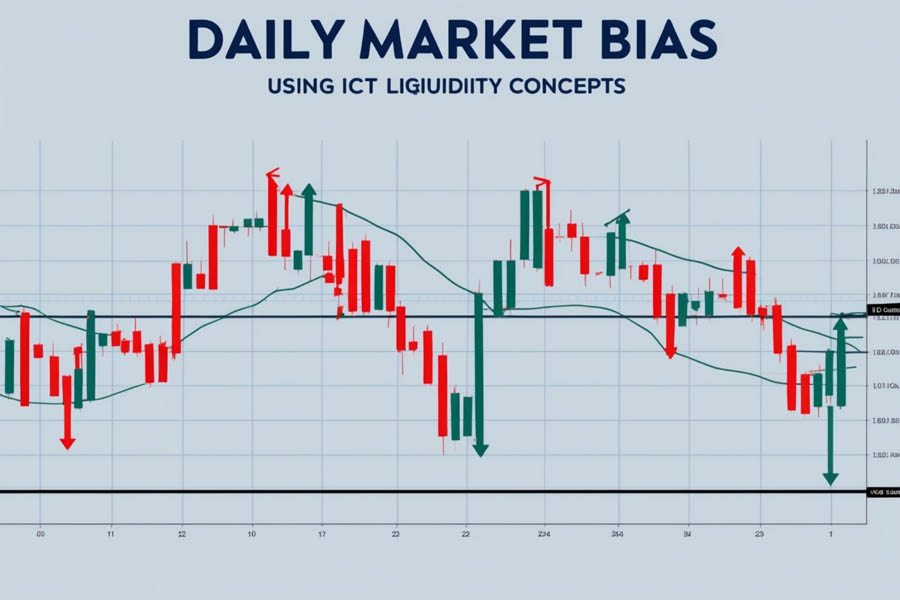
Identifying the daily market bias using ICT Internal Range Liquidity (IRL) and External Range Liquidity (ERL) is a powerful technique. Here’s how you can apply this concept:
Step 1: Identify IRL and ERL
As discussed, price moves between internal and external liquidity ranges. Begin by identifying the ICT internal and external range liquidity on the daily or weekly chart near, above, and below the current market price.
Key Points to Remember:
- Internal Range Liquidity (IRL): Look for Fair Value Gaps within the current dealing range.
- External Range Liquidity (ERL): Identify the significant highs and lows of the dealing range where liquidity might be targeted.
Step 2: Determine Potential Bias
- Bullish Bias: If the price first takes out internal range liquidity and the external range liquidity lies above the current price, the bias is likely bullish. This suggests that the price will move upward to capture the external range liquidity.
- Bearish Bias: Conversely, if the price first takes out internal range liquidity and the external range liquidity lies below the current price, the bias is likely bearish, indicating that the price will move downward to capture the external range liquidity.
This focus on external range liquidity is crucial because it aligns with the major trend of the market, while internal range liquidity is often targeted by price retracements.
Read More: Mastering ICT Liquidity Pool Trading
Step 3: Scenarios After Capturing ERL
- Bearish Reversal in a Bullish Market: If the price sweeps and closes below the ERL (an old high) with a momentum shift on the lower timeframe, this could signal a potential bearish reversal. The market may then target the unfilled IRL (Fair Value Gap) below.
- Continuation of Bullish Trend: If the price closes above the ERL without a reversal or momentum shift, the market might continue its bullish trend or consolidate around the ERL before making another move.
Understanding these scenarios allows traders to anticipate market shifts and adjust their strategies accordingly, whether they are looking for continuation trades or potential reversals.
Enhancing Trading Strategies with ICT Liquidity Concepts
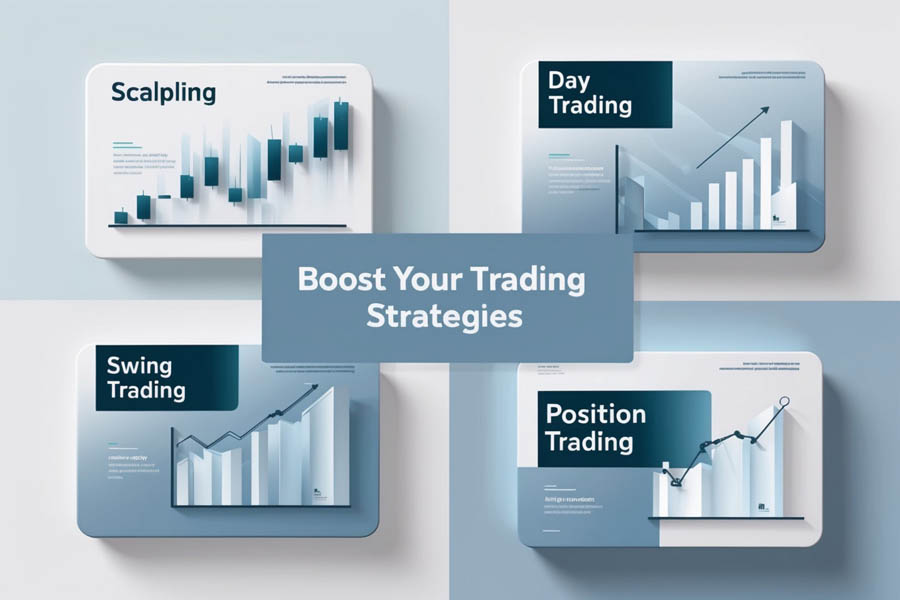
Integrating ICT internal and external range liquidity into your trading strategy can significantly enhance your trading outcomes. Here’s how these concepts can be applied to various trading strategies:
1. Scalping
- Quick Entries and Exits: Utilize the knowledge of liquidity sweeps to time entries and exits with precision. Focus on liquidity traps in lower timeframes to capture quick profits.
- Fair Value Gap (FVG) Utilization: Identify small FVGs within the internal range for potential scalping opportunities.
2. Day Trading
- Daily Bias Analysis: Use daily bias identification techniques to align trades with the anticipated market direction.
- Liquidity Zones: Identify key liquidity zones for potential entry points. Wait for liquidity sweeps at these levels before entering trades.
3. Swing Trading
- Trend Following: Align swing trades with the major trend, using external range liquidity as key target areas.
- Risk Management: Utilize liquidity zones for placing stop-loss orders, ensuring they are positioned beyond key liquidity levels to avoid premature exits.
4. Position Trading
- Long-Term Bias: Determine the long-term bias using weekly or monthly charts, focusing on significant external range liquidity zones.
- Liquidity Accumulation: Look for accumulation of liquidity at key levels before entering long-term positions, ensuring trades are aligned with the overall market trend.
By applying these strategies, traders can refine their approach to different market conditions, enhancing their ability to profit from both short-term fluctuations and long-term trends.
Read More: Mastering ICT Trend Reversal
OpoFinance: Your Trusted ASIC-Regulated Broker for Forex Trading
Choosing the right forex trading broker is a critical decision that can greatly impact your trading success. OpoFinance, an ASIC-regulated broker, offers a secure and advanced trading environment that supports traders at all levels.

Why Choose OpoFinance?
- Regulation and Safety: OpoFinance is regulated by the Australian Securities and Investments Commission (ASIC), ensuring a high level of security and transparency.
- Advanced Trading Tools: The platform provides state-of-the-art trading tools that are essential for analyzing liquidity ranges, helping you make informed trading decisions.
- Social Trading Features: OpoFinance’s social trading service allows you to follow and copy the trades of top traders, offering a unique opportunity to learn and diversify your strategies.
With OpoFinance, you’re not just trading; you’re building a partnership with a broker dedicated to helping you succeed in the competitive world of forex trading.
Features of OpoFinance:
- User-Friendly Interface: Designed to cater to both beginners and experienced traders, OpoFinance offers a user-friendly interface that simplifies the trading process.
- Comprehensive Education Resources: Access to a wealth of educational materials, including webinars, tutorials, and market analysis, to enhance your trading knowledge and skills.
- Dedicated Customer Support: OpoFinance provides 24/7 customer support to assist traders with any issues or queries, ensuring a smooth and hassle-free trading experience.
Trading Instruments Available on OpoFinance:
- Forex: Trade a wide range of currency pairs, including majors, minors, and exotics.
- Commodities: Access markets for gold, silver, oil, and other commodities.
- Indices: Trade major global indices with competitive spreads.
- Cryptocurrencies: Engage in the fast-paced world of cryptocurrency trading.
Conclusion
Mastering ICT internal and external range liquidity is a crucial skill for any serious forex trader. By understanding how price moves to capture liquidity, and how to identify daily biases using these concepts, you can significantly enhance your trading performance. Whether you’re trading with a regulated forex broker like OpoFinance or independently, these insights will help you navigate the complexities of the forex market with greater confidence.
Recap of Key Concepts:
- ICT Internal Range Liquidity: Focuses on the Fair Value Gap within the dealing range, representing an area of market imbalance.
- ICT External Range Liquidity: Encompasses the highs and lows of the dealing range, where significant liquidity is often targeted.
- Liquidity Capture Cycle: Price movement typically involves sweeping external range liquidity, balancing the internal range, and then returning to external liquidity.
- Daily Bias Identification: Using internal and external liquidity concepts to determine the market’s daily bias, guiding trade decisions.
Why is the Fair Value Gap (FVG) considered internal range liquidity in ICT?
The Fair Value Gap (FVG) is considered internal range liquidity because it represents an area of imbalance within the internal range of the ICT dealing range. As the market moves to fill this gap, it sweeps the liquidity present in the lower timeframe, making the FVG a critical zone for understanding internal liquidity dynamics.
How can I use external range liquidity to improve my trading strategy?
External range liquidity helps traders identify potential areas where the market is likely to capture liquidity, such as significant highs or lows. By understanding where external liquidity lies, traders can anticipate price movements and adjust their strategies to capitalize on these shifts, whether through breakout trades or trend-following strategies.
What role does liquidity play in minimizing trading risks?
Liquidity plays a vital role in minimizing trading risks by ensuring that trades can be executed with minimal slippage, especially within high-liquidity environments. By understanding the flow of liquidity from internal to external ranges, traders can better manage their risk by entering trades at optimal points and using appropriate stop-loss placements to protect their capital.







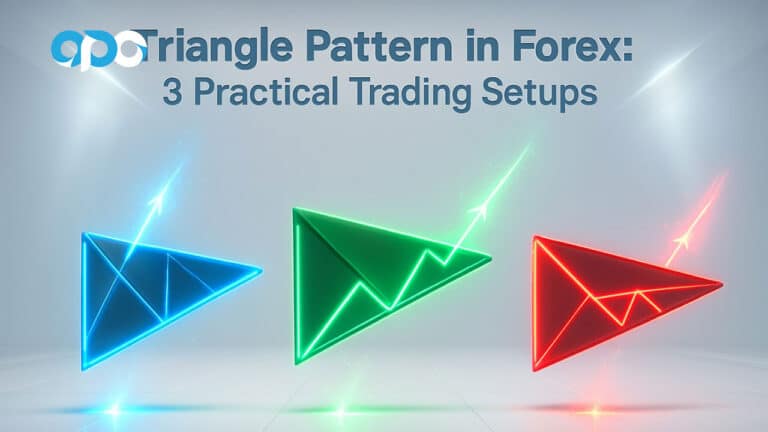
One Response
I was recommended this web site by my cousin. I am
now not positive whther this put up is written by way
of him as nobody else realize such exact about my trouble.